In all the fuss and frenzy of trying to do a Big Year in New York I’ve been all over the state but when I get some time during the week I get out to the local patches pretty often too. After all, regardless of rarities, it is the local locations in which I have seen the bulk of the birds I’ve spotted this year. Lately, as the wood-warbler migration has dwindled, sparrows and other quick little birds have moved in to fill the field of view of my binoculars and the viewfinder of my camera.
Of all the sparrows moving in for the winter, or through on their way south, an adult White-crowned Sparrow is undoubtedly the most attractive. Sure Field Sparrows are cute with their pink bills and soft colors and a brightly-plumaged White-throated Sparrow can look pretty snazzy when one comes out from under a bush. They just can’t compete with the crown that makes their fellow sparrow king.
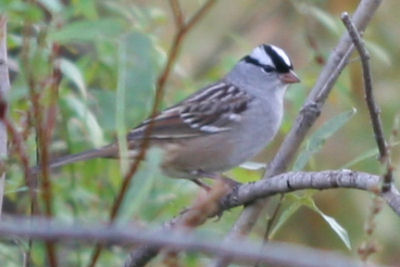
And you know that the juvenile White-crowned Sparrows can’t wait to grow up and look like mom and dad.
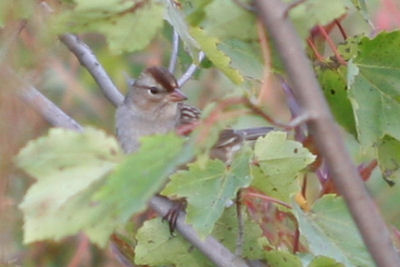
Song Sparrows will soon be heading south but on occasion of late some have been singing, one of the few species making more than a chip note this time of year. Chipping Sparrows are still around but they have mostly flocked up and they will soon be replaced by their chest-spotted lookalikes, the American Tree Sparrow.
In addition to the aforementioned members of the family Emberizidae, some non-sparrow sparrows are moving as well. Eastern Towhees are on their way out and Dark-eyed Juncos are heading downslope and/or south. I’ll miss the towhees’ sharp “tow-hee” calls and admonitions to “drink your tea” but welcome the juncos’ high-pitched chips and twitterings.
The kinglets have started coming through too, at least the Ruby-crowned Kinglets have. Golden-crowned Kinglets can’t be far behind. The few rubies I have seen lately have driven me crazy trying to get good shots of them. They are so quick and so small! Here are the best two pics I’ve managed to get so far this fall.
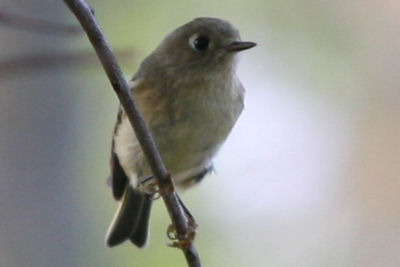
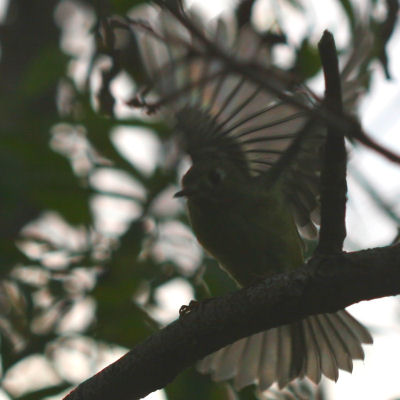
If only that second shot had been in good light!
And though most of the warblers have come through already it was just last week that I was complaining that I had yet to see a Yellow-rumped Warbler this fall. I’ve seen enough now. Seriously. They are everywhere. If they and the Black-capped Chickadees ever decided to declare war on humans we’d be in some serious trouble.
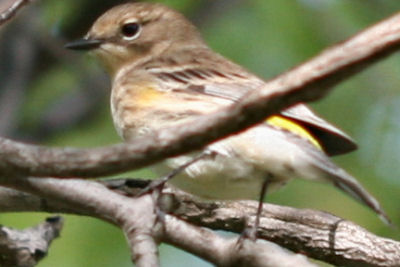
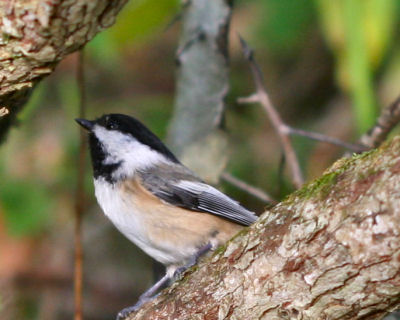
The ever-faithful chickadees, titmice, finches, and woodpeckers are around as always. Yellow-bellied Sapsuckers are heading south now, leaving a trail of trees with sap dripping from them, sustenance for lingering warblers and others. Scads of Blue Jays are competing with flocks of American Crows to see which corvid can make the craziest cacophony. The icterids have been active, with Red-winged Blackbirds flocking up and heading south while Rusty Blackbirds pause in marshes and wet woods on their migration. Waterfowl have started to trickle through; both Green-winged and Blue-winged Teal have been around for awhile but this past weekend saw some scoters and others reported from around the region.
And what aren’t I seeing? Well, Orange-crowned Warblers, which only come through in fall, have managed to avoid my gaze entirely so far, but none at all have been reported from the region as of yet so maybe they really haven’t started moving? And, of course, the cursed Connecticut Warblers are probably almost done moving through without having graced me with their presence. Gray-cheeked Thrushes, which I have never seen, should be moving about now, but they might be bypassing the region as thrush reports in general have been rather sparse this fall around Albany. But I’ll spend this weekend in New York City and hopefully will catch up to some of the birds that have passed me by.
Get out there and go birding! Who knows what is out there…













Corey,
Would you please recommend a book (or list hotspots) for birding NYS Region 8. I will be there next week and, by past perfermance, have not a clue of where to find birds there.
Jerry
Jerry,
THe Hudson Mohawk Bird Club has a great guide to birding the region. They are at http://www.hmbc.net/
Good luck…
Corey
what are some local birds species in albany during spring/summer time? Im suppose to make a birdhouse that attracts a specifc specie of birds here in Albany and I know nothing about birds except for the owls and the eagles i watch in cartoons lol. Sounds depressing right? Please answer my question if you can and thank you.